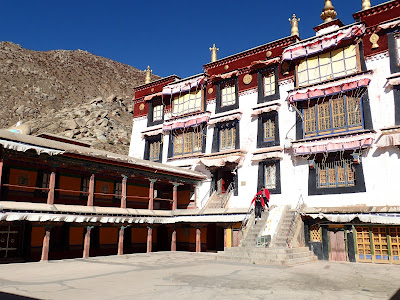Mt. Everest, Rongbuk and Base camp

A long day on the bus (380kms) took us on paved highways over several high passses - Khamba La (4996m) with views of Yamdrok Tso (4400m), one of 4 holy lakes in Tibet. Lunch in Nangartse and then over the Karo La pass (5193m), Simi La (4611m) and a stop in Gyantse (3980m) to see the Kumbum (a 32m high chortan under renovation), Pelkor Chode monastery and the Gyantse fortress. Arrived in Shigatse, Tibet's second largest town (3900m) at 8:30pm, got a quick shower and off to bed! Up early the next day to drive to Shegar (Xegar) at 4408m. It was a good, paved road from Shigatse and driving out to see Sakya monastery, however road construction closures prevented us from continuing. Disappointed, however, this gave us an opportunity to visit the Tonggar Chode Monastery, a much smaller, but beautiful new building completed in 2009. We had a Chinese lunch in Lhatse and then over Gyatso La (5205m) and the first views of Mt. Everest. Arrived in Xegar 5:30pm - the sun was warm b...



